
The 10 Greatest 80’s Wrestlers
Last updated on May 8th, 2022 at 11:27 am
Considered to be the Golden Era of professional wrestling, the 80s was full of numerous wrestling promotions. From ECW to WWF to WCW, the competition was not only stiff but also each of these promotions commanded a fair share of the professional wrestling market.
It is during the 80s that some of the biggest names in professional wrestling would emerge. Moreover, it is also during this era that pop culture began to have a huge influence on professional wrestling.
Unlike the modern era, wrestling in the 80s consisted of territories spread out in the United States. States that were not covered in the territories had to watch the nearest ones. On the other hand, huge states such as Texas had numerous territories.
Because of these territories, the talent was not only well spread out but also wrestlers were highly talented.
After Vince McMahon Jr. took WWF from his father, he would begin searching for the top talents in each territory and bring them to the WWF. Towards the mid-1980s, the territories would ultimately become defunct which ultimately resulted in the collapse of many wrestling promotions.
It is under Vince McMahon’s Jr. vision that the company would now begin to get nationwide and worldwide recognition. Television coverage and collaboration with the largest broadcasting companies in the country would help elevate the WWF into a professional wrestling powerhouse.
Larger-than-life athletes and some of the greatest wrestlers of all time such as Hulk Hogan, Ultimate Warrior, The Sheikh, and many others would emerge and help reinstate the company as the biggest professional wrestling franchise.
Moreover, renowned personalities and celebrities such as Mr. T and Cyndi Lauper would also begin to make cameos on WWF shows. It is through these cameos and collaboration with renowned personalities that would ultimately put the WWF on the map and in turn get noticed by various networks such as MTV.
Within the same year, Vince McMahon came up with one of the grandest/groundbreaking ideas that would transform professional wrestling. Vince McMahon envisioned a show that featured celebrities and well-established professional wrestlers.
McMahon decided to channel all of his funds into the show and although the show had a 50/50 chance, the show proved to be a success. It was the very first Wrestlemania event.
10. Jake “The Snake” Roberts
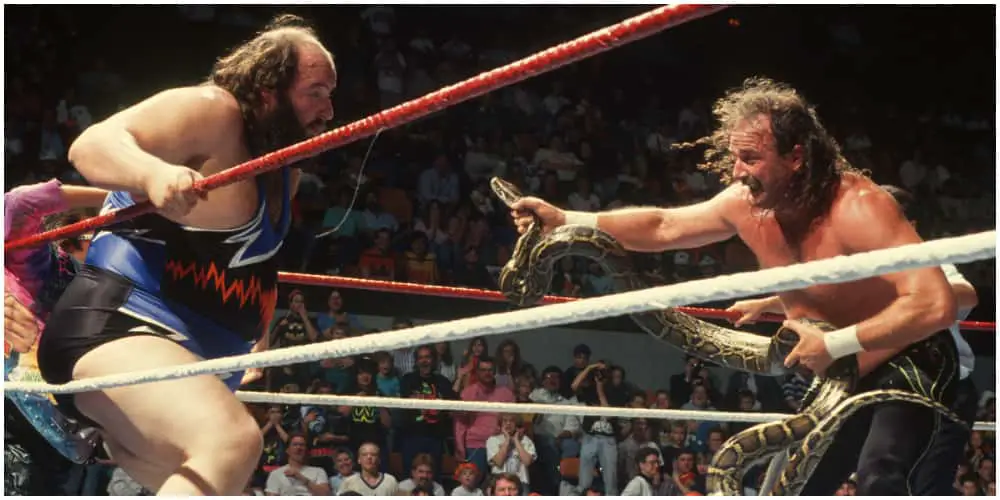
One of the most recognized pro wrestlers of the 1980s, Jake the Snake Roberts’s mic skills and ability to cause fear in his opponents made him a force to reckon with. Inside the squared circle, Jake the Snake Roberts was a predator, who devoured his opponents by using fear as one of his tools.
Although he did not have plenty of wrestling moves, Jake the Snake Roberts’s quickness and niftiness in the squared circle saw him change the course of matches in the blink of an eye.
Although Jake The Snake Robert’s ring work was solid, it’s his exceptional mic skills and ability to cut promos that made him quite memorable. A sinister hypnotist, Roberts was undeniably one of the greatest poets to ever step into the ring widely remembered for his in-ring psychology.
All these attributes helped Roberts connect effortlessly with the crowd and manipulate his opponents. As mentioned earlier, Jake The Snake Roberts was not the most technical wrestler, but many wrestling fans will remember him as the inventor of DDT.
9. Roddy Piper
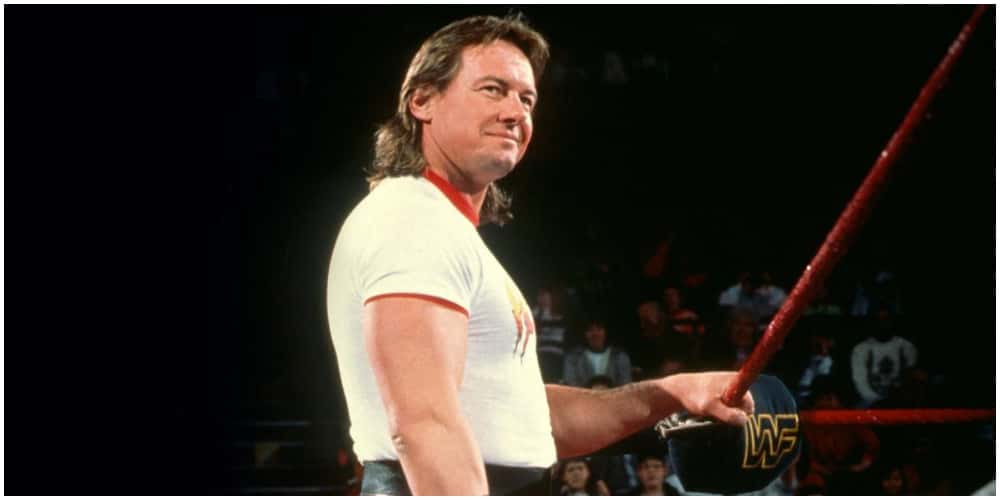
Just like Shawn Michaels, Roddy Piper remains one of the most polarizing superstars to ever step into the squared circle. A virtuoso performer both on the mic and inside the squared circle, Roddy Piper’s uncanny ability to communicate with the audience made him one of the most hated villains in sports entertainment.
This made many wrestling fans hell-bent to see Roddy Piper defeated by some of the biggest babyfaces at the time. On other occasions, Roddy Piper transformed into a babyface that fans adored and supported throughout his fights.
By the end of his wrestling career, it was quite clear that Roddy Piper was not only a master of the art of wrestling but also psychology. His mastery of psychology often played a crucial role in getting any reaction that he wanted from the crowd regardless of the territory.
While he was not the greatest technical wrestler, Roddy Piper often relied on his brawling abilities, body language, and facial expressions. And they all paid off.
His promos were not only one of a kind but also quite memorable.
Throughout Piper’s illustrious wrestling career, he was part of some amazing feuds against the likes of Greg Valentine, Hulk Hogan, Ric Flair, Rick Rude, Mr. T, and many others. All these classic feuds played a crucial role in making Roddy Piper one of the biggest draws in the WWF at the time.
Just like Randy Savage and many other renowned 80s wrestlers, Roddy Piper played a crucial role in transforming the WWF. For Piper, his attitude and edginess predated both Stone Cold and ECW.
8. Ultimate Warrior
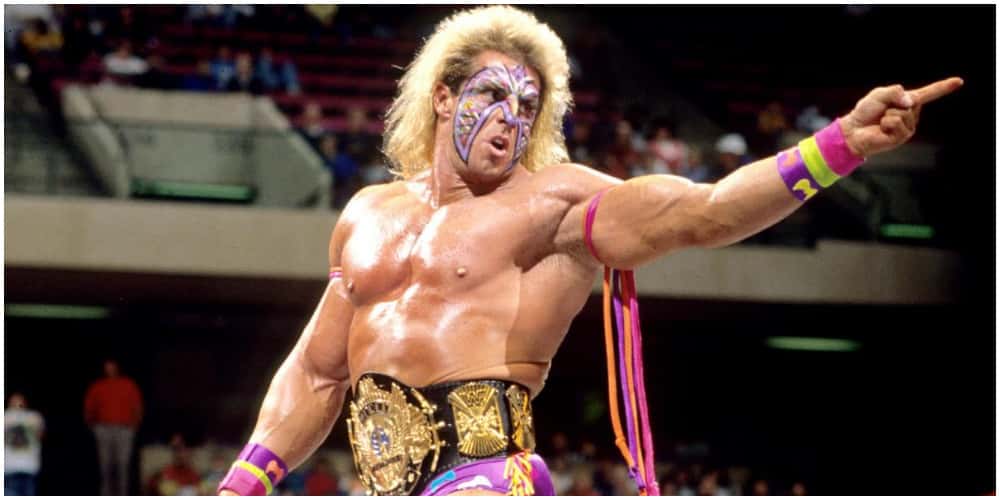
The Ultimate Warrior’s otherworldly promos, entrance routine, and dominant display made him a household name in professional wrestling. Unlike most wrestlers on this list, the Ultimate Warrior’s WWF career picked up towards the end of the 1980s. Like most rookies, the WWE placed the Ultimate Warrior in the C-Shows alongside another rookie Ted Dibiase.
The C-Show is much like the lower card and mainly consisted of jobbers, newcomers, and lower-level TV stars. Moreover, these shows mainly took place in school gyms and other similar venues.
Going with the gimmick The Dingo Warrior, the Ultimate Warrior received cheers and screams that were never witnessed within the division. Fans just appeared to love this newcomer. After seeing the reaction, he always got from the crowd, the WWF decided to repackage him as the Ultimate Warrior after only three months.
At Wrestlemania IV, the Ultimate Warrior was already a sensation hit and thus the WWE placed him in a non-tournament match against Hercules. In August, the Ultimate Warrior took part in the promotion’s first-ever Summerslam Event.
Although it was never a scheduled match, the Ultimate Warrior managed to beat the Honky Tonk Man in just under 30 seconds.
By defeating the Honky Tonk Man, the Ultimate Warrior not only sent the entire Madison Square Garden into a frenzy but also became the new Intercontinental Champion. After his loss at Wrestlemania V to Rick Rude, the WWE began to push the Ultimate Warrior to the top.
7. Ricky Steamboat
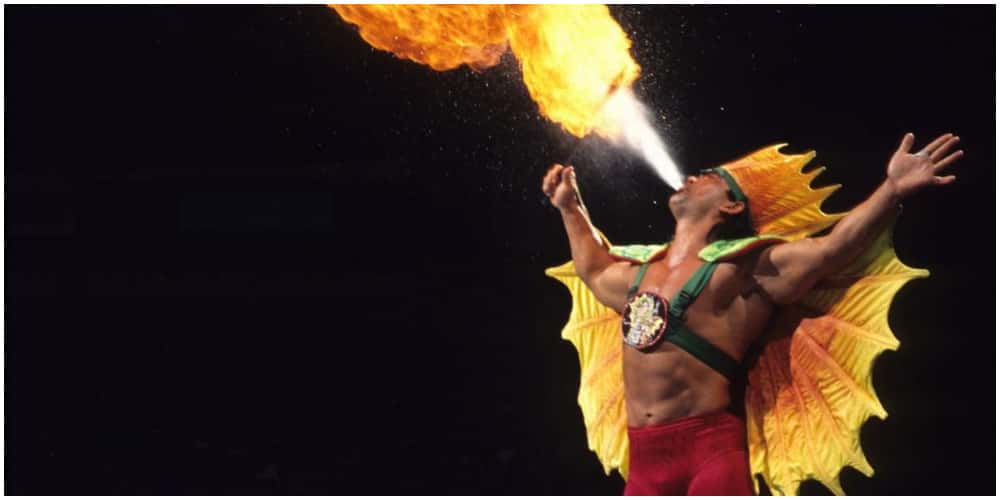
One of the best pure strikers in sports entertainment, Ricky “The Dragon” Steamboat was undeniably one of the most entertaining wrestlers back in the 1980s. During his early years, Ricky Steamboat wrestled for AWA, CWA, and Jim Crockett Promotions before ultimately joining the WWE. With Jim Crockett Promotions, Ricky Steamboat would be involved in a series of feuds with Rick Flair.
During this period, Rick Flair was the Mid-Atlantic champion, and thus when he began goading Ricky Steamboat, it seemed like a perfect moment for the wrestler to seize the moment.
During his rather long career with JCP, Ricky Steamboat managed to capture the NWA United States Championship three times, the NWA Heavyweight title two times, and the Tag Team Championship title an impressive six times. Ricky Steamboat would ultimately leave JCP after having to create differences with Dusty Rhodes, a JCP booker.
In the same year, Ricky Steamboat received a contract from WWE chair Vince McMahon. To make Ricky Steamboat more marketable, WWE decided to rebrand/repackage the wrestler.
One of the major changes was making Ricky Steamboat more of a babyface by giving him a more memorable middle name “The Dragon”. Moreover, the WWE also stripped the wrestler off his trunks and jacket attire and instead presented him with long tights and a keikogi.
Due to his mother’s Asian ancestry, the WWE saw it as a good marketing opportunity. Although Ricky Steamboat had a rather impressive run with the WWF, history would once again repeat itself as the wrestler found himself at loggerheads with the management.
Ricky Steamboat would leave the WWF in 1988 after one of the most impressive runs by a WWF wrestler.
6. Tito Santana
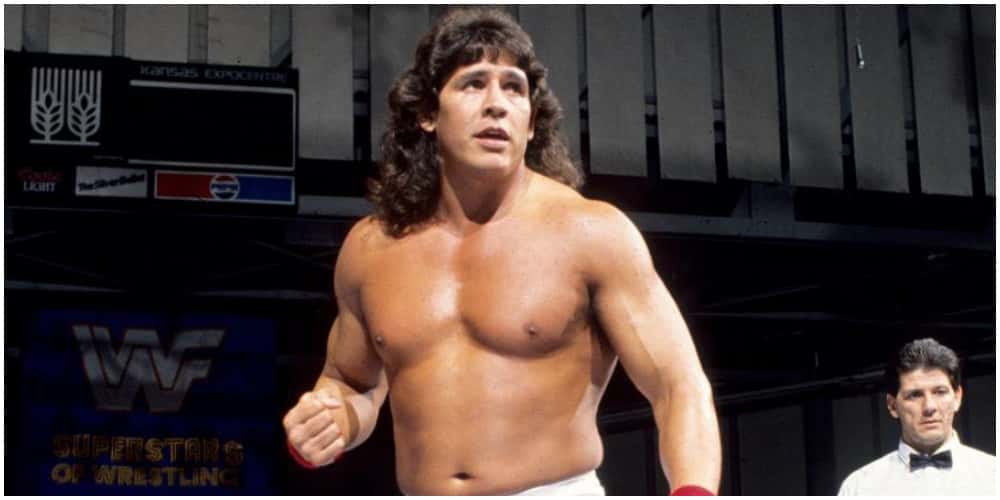
Considered to be the most adaptable wrestler of all time, Tito Santana was a wrestler who excelled both in singles and tag team competitions. Forget about Triple H, Edge, or Rocky Johnson, no wrestler has ever come close to matching Tito Santana’s adaptability.
An elite in-ring performer, Tito Santana knew how to work the ropes and dominate matches. Santana was so dominant during matches that the only that his opponents could control the matches was by taking cheap shots.
Santana’s impressive 15-year career in the WWF saw him become one of the greatest Mexican wrestlers of all time.
Like most professional wrestlers, Tito Santana began in the lower cards with his main role being that of a jobber for bigger and well-known heels. In 1979, Tito Santana teamed up with Ivan Putski. The new stable wasted no time in establishing themselves in the tag team division during their official debut.
The team ended up winning the tag team titles from Johnny Valiant and Jimmy Snuka. The duo would embark on one of the longest reigns, going 173 days undefeated. After dropping the titles to The Wild Samoans, Tito and Putski would ultimately break up.
This would mark Tito’s journey as a singles wrestler.
5. Jerry “The King” Lawler
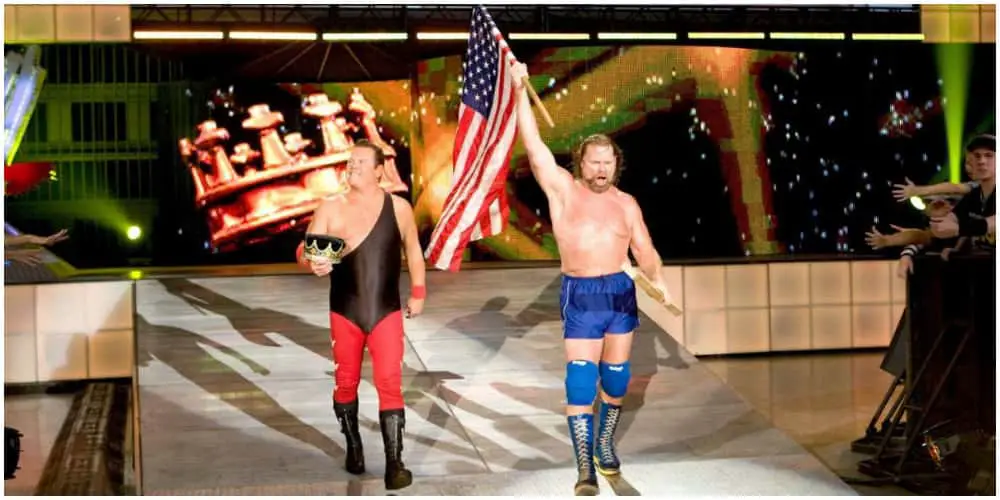
One of the greatest color commentators of all time, Jerry “The King” Lawler is an accomplished wrestler who wrestled in various territories and promotions before joining the WWE. Throughout his illustrious wrestling career, Lawler won multiple World championships including World Heavyweight titles.
While signed with USWA, Lawler managed to win the World Heavyweight title a record 28 times. Although he never managed to win any titles in the WWE, Lawler still holds the record for the most recognized titles.
In 1992, Lawler made his WWF debut as a ring announcer on Superstars. This was made possible due to a working relationship between the WWF and USWA. In the years that followed, Lawler would feud with Bret Hart and the entire Hart family.
After Bret Hart won the King of the Ring tournament, Lawler would immediately launch an attack on Bret Hart claiming he was the only king of pro wrestling.
Lawler would later on feud with Vince McMahon, Roddy Piper, and Doink the Clown. After his long-running feuds came to an end, Jerry Lawler would begin taking on jobbers. During many of these matches on WWF Superstar, Lawler would do his own commentary while wrestling.
Ultimately, Lawler would leave the WWF to wrestle in the Indie scene with promotions such as ECW and Ohio Valley Wrestling.
4. Randy Savage
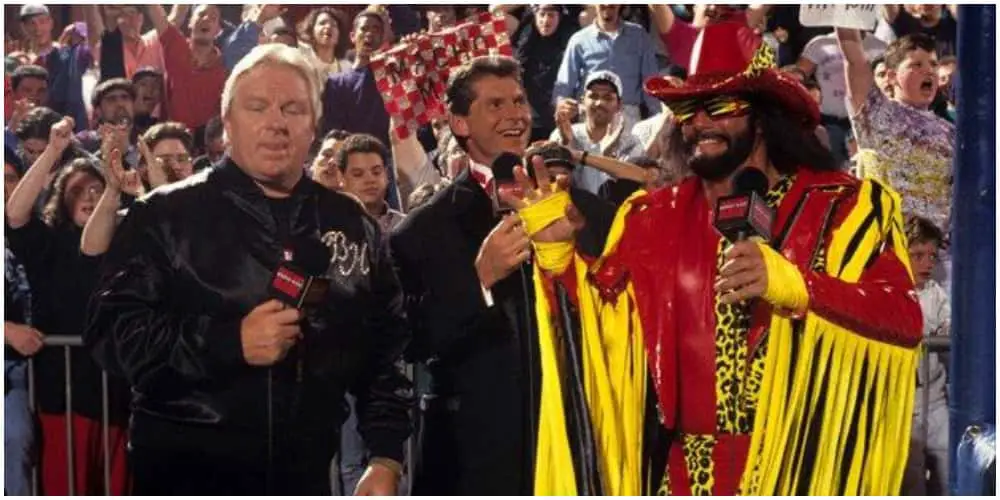
Randy Savage was an iconic wrestler back in the 1980s all thanks to his impressive ring attire, distinctive and raspy voice as well as unmissable intensity. By the end of his illustrious wrestling career, The Macho Man had accumulated an impressive 11 titles.
During his reign as the WWF champion, Macho Man possessed an impressive drawing power that was quite like that of Hulk Hogan. Considered to be the greatest titleholder of all time by the WWE, Randy Savage’s in-ring performance saw him bring some level of credibility to the world title.
For a bigger part of his wrestling career both with the WWF and WCW, Elizabeth Hulette his real-life wife served as his manager. Unlike most babyfaces, Randy Savage was a wrestler who did not shy off from becoming a villain.
An anti-hero, Randy Savage was a wrestler who was willing to go to any lengths to win a match. Whether it is hitting an opponent on the head with a foreign object, or giving out a low blow, Randy Savage always did what he had to do.
Despite his theatrics, sideshows, and innuendos, Randy “The Machoman” Savage always gave his heart out when he stepped into the squared circle. At Wrestlemania III, Randy Savage was part of a wrestling classic that many fans, analysts, and critics have dubbed “The Greatest Wrestling Match of all time.
The epic encounter between Randy “Machoman” Savage and Ricky “The Dragon” Steamboat was a wrestling masterclass that not only lived up to its expectations but was more impressive than the main event later that night between Hulk Hogan and Andre the Giant.
3. Ric Flair
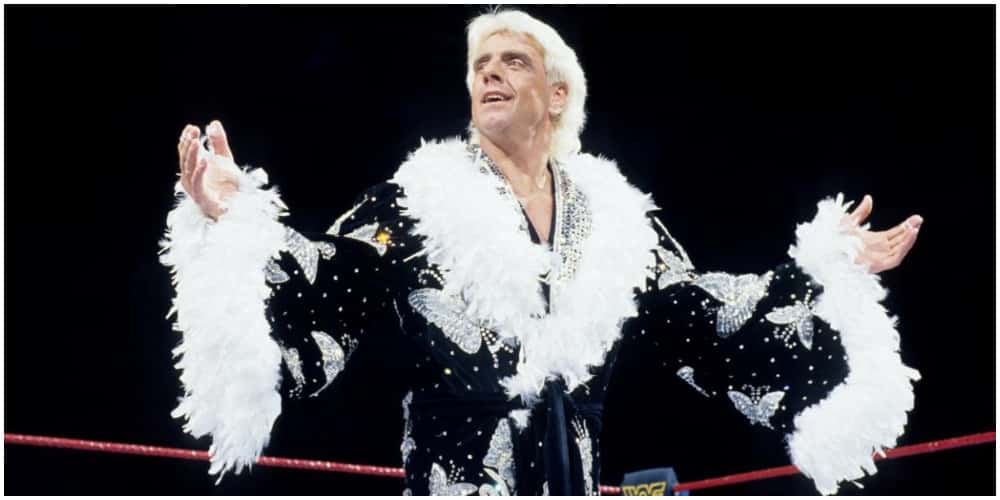
Considered to be one of the greatest in-ring performers of all time and longest-performing pro wrestlers, Ric Flair’s animated character and charisma turned him into one of the most memorable wrestlers of the ’80s. Prior to joining the WWE, Ric Flair wrestled in WCW and NWA wreaking havoc with what many wrestling fans termed as the greatest factions in professional wrestling, the Four Horsemen.
A dominant figure at WCW and TNA, the Four Horsemen would go ahead and lift multiple world championships at both promotions.
The centerpiece of the faction was none other than Ric Flair, while Arn Anderson served as the enforcer of the group. Technically speaking, many people considered him the glue or the heartbeat of the group. Throughout their illustrious wrestling careers, the group would launch a series of attacks on various wrestlers.
These groups of wrestlers included Dusty Rhodes, Sting, Robert Gibson, Ricky Morton, and many others.
Although Ric Flair was a significant member of the group, he still managed to advance his singles career and even in some cases sought help from the faction.
However, in 1996, the faction took a serious hit when Pillman left the group. The group was never to be the same especially with the emergence of the New World Order.
A 16-time world champion, Ric Flair made history by becoming the first-ever wrestler to hold the WCW International World Championship title and the WCW World Championship title.
2. Andre the Giant
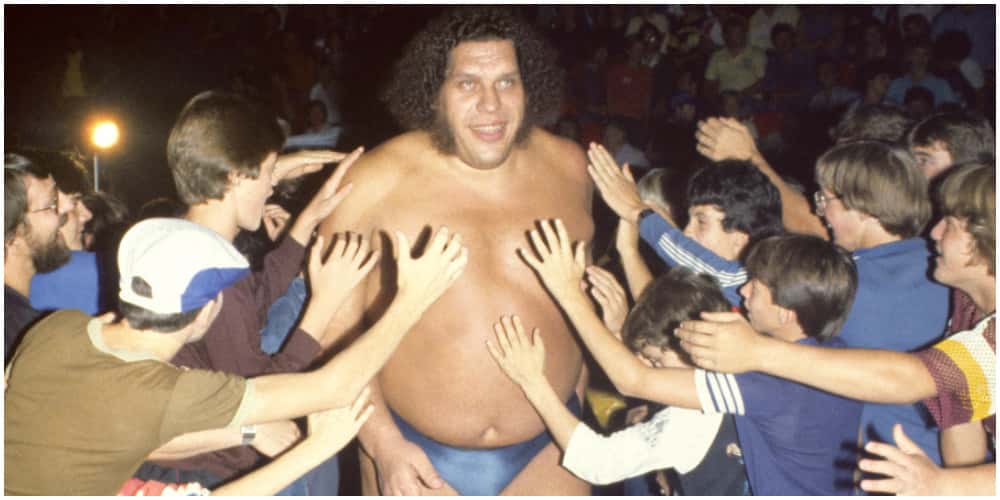
Popularly billed as the 8th Wonder of the World, Andre the Giant was a towering behemoth and one of the biggest wrestlers of all time. During the 80s, Andre the Giant was one of the biggest draws for the company mainly due to his massive size.
Fans loved giant wrestlers and thus many wrestling promotions did all they could to bring these larger than size athletes onboard.
Prior to becoming the superstar that he later came to be, Andre the Giant was nothing other than a regular wrestler with a unique build.
Unlike most giant wrestlers, Andre the Giant was athletically gifted and thus could perfectly execute moves such as the dropkicks and many others. After a brief stint in France, Andre the Giant relocated to Canada where he became a sensation hit.
However, it did not take long before Andre the Giant lacked any serious opponents to face.
Many wrestling promotions ran out of ideas mainly due to Andre the Giant’s size and dominance in the ring.
Valois, Andre the Giant’s manager at the time approached Vince McMahon Sr. Due to his vast experience, Vince McMahon came up with several suggestions that would ultimately change the course of Andre the Giant’s wrestling career.
McMahon first suggested a name change as well as the abandonment of various moves like the dropkick, which according to him made Andre the Giant appear rather small.
Andre the Giant would ultimately become a sensation hit with the WWF becoming one of its biggest draws in the 80s alongside Hulk Hogan, Randy Savage, and Ricky Steamboat.
1. Hulk Hogan
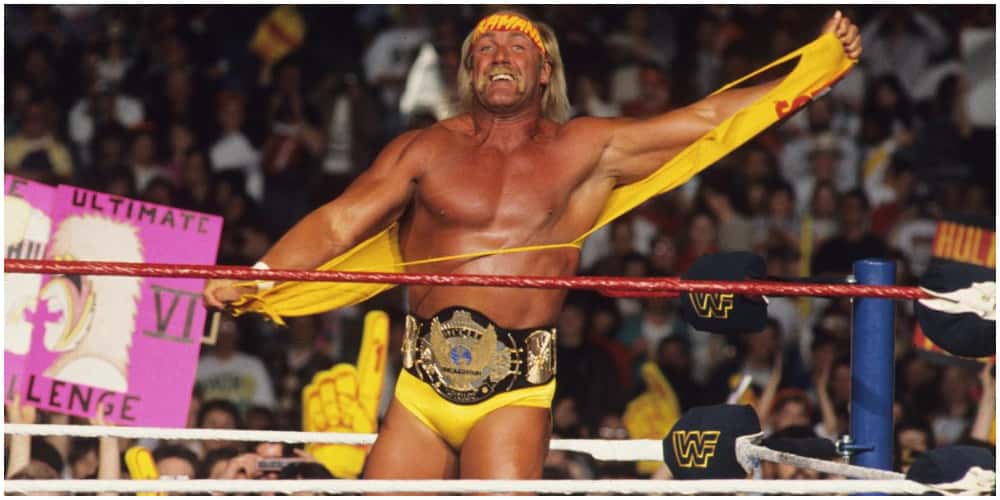
One of the biggest names of the 1980s, Hulk Hogan is undeniably the greatest wrestler of the 1980s. A well-built giant, Hogan’s charisma, mic skills, and technical skills saw him transcend into a household name. Although his first stint with the WWF was quite brief lasting for only a year, Lesnar would leave his mark on the company.
A dispute regarding his availability and commitment to the company after he agreed to appear in the blockbuster Rocky III led to his premature exit from the promotion.
Hogan would feature briefly for AWA, before leaving the company. Lesnar’s exit from AWA culminated after the wrestler came to the realization that Verne Gagne had no plans of handing the world title to Hogan. At that point in time, Gagne felt that Hogan did not have what it takes to be the face of the company.
A mistake that he later came to realize. Fortunately, Vince McMahon was highly interested to have Hulkmania back on WWF and presented the wrestler with an offer that he could not refuse.
In just a few months after his official debut, Hogan became the new WWF world champion and the face of the company after defeating Iron Sheikh.
Hogan’s impressive win against The Sheikh marked the ascension of the Hulkamania making him a mainstream superstar. A marketing genius, McMahon’s plan to go national was finally working out and the centerpiece of his blueprint was none other than Hulk Hogan.
Together with fellow wrestlers such as Roddy Piper Orndorff and Roddy Piper, these wrestlers helped propel WWF into greater heights in the process pulling off never seen before television records and pay-per-view buy rates.
McMahon together with his army of wrestlers had just managed to revolutionize pro wrestling.
